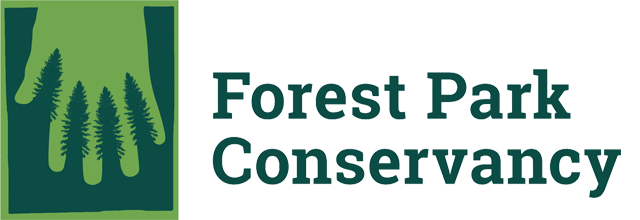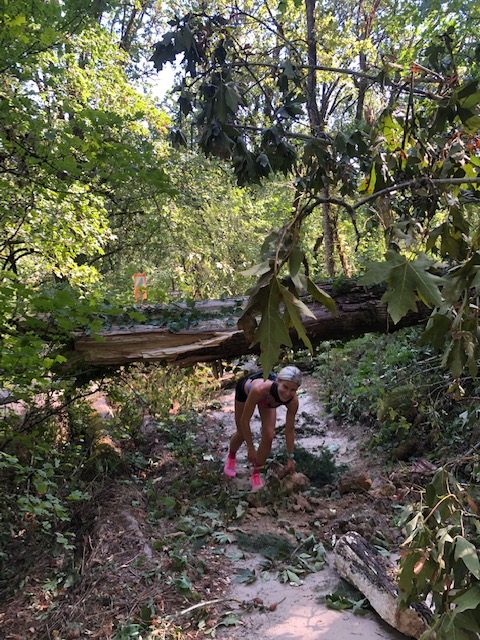Autumn brings a lot of changes to Forest Park: beautiful fall colors, followed by bare deciduous trees; fresh, cool air that smells rich with plant life and rain; stubborn mud that sticks to your boots; and downed trees, which often fall across the trail.
If you’re planning to go into Forest Park in the rain or wind, keep in mind that weather can often be more extreme in the park than it is in the rest of the city due to elevation and slope exposure. If it’s windy, we recommend keeping an ear out for creaks and cracks. When you feel a strong gust blow through, listen closely and look up at the canopy for falling trees and branches. And if you witness a tree fall in Forest Park in rainy or windy conditions, that’s a good sign that it’s time to head home!
As a trail user, you might be wondering how downed trees across trails are addressed by workers in the park—and how you can help make sure they don’t stay for long. We’ve pulled together a short FAQ that we hope is helpful.
#1: What can I do about downed trees?
We are so appreciative of the vibrant stewardship community in the Park, and we get a lot of questions about how people can help throughout the year. The best thing you can do is report downed trees to Forest Park Conservancy and PP&R by email: info@forestparkconservancy.org. We will make sure your report reaches the appropriate staff.
When you report a tree, be sure to include the tree’s location, approximate tree diameter, and any other useful information. If you include photos, all the better! Here’s an example:
“On my run yesterday evening I came across two trees on Wildwood near the Springville entrance. One is about 10-12″, just North of the Ridge Trail intersection. You can step over it easily. The other is a big one, nearly 24″ a few dozen paces South of mile marker 20.25 and is about 3′ feet off the ground.”
Unless you can safely toss a branch or very small tree aside by hand, do not remove downed trees in Forest Park—not with axes, not with handsaws, and certainly not with chainsaws. If you’re interested in getting more involved with trail work and ensuring trails are clear and safe, consider reaching out to Zac about our Rapid Response Program. We equip Rapid Responders with the training and reporting tools necessary to assist us more than the average park-goer.
#2: Who clears downed trees?
Our partner, Portland Parks and Recreation (PP&R), commits significant time to tracking and clearing downed trees in the park. As soon as resources allow, they assign workers to clear downed trees in a given area, prioritizing trail sections with the most numerous and hazardous trees first. They know about tree locations primarily because of trail user and Rapid Responder reports.
Our staff are able to assist when called upon throughout the fall in between tread work and raking projects. Then, when January and February roll around (along with more wind storms and frost), our field staff dedicate more time to clearing downed trees in coordination with PP&R.
#3: But this tree has been in my way for too long! What gives?
With about 80 miles of trails and firelanes, Forest Park is vast and our workers are only human! As soon as you notice a downed tree, you can report it (see question 1) but if you’ve reported it and it’s been a few weeks, it’s possible that your tree is just not a hazard compared to other trail issues.
That doesn’t mean it will never be removed—it just means that the well-trained, hardworking folks at FPC and PP&R have a birds-eye view of trails and are allocating resources elsewhere for now. We’re constantly triaging trees and other safety concerns on our trails to make sure they are as safe as possible as soon as possible.
If you think a tree presents an urgent safety hazard, it’s been around for 4+ weeks, and/or you didn’t receive a response to your initial email report, feel free to give us a nudge to make sure it’s on our list.
Happy trails!

